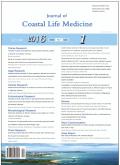Recent advance on aspect of fisheries: A review
引用次数: 20
Abstract
The history of aquaculture in China dates back to 4 000 years ago[1]. Today, Asia has the highest rate of production. According to FAO statistics in 2011 to 2014[2], 14 countries have produced more than 0.5 million tons per year (10 of them in Asia). Based on this statistics between the years of 2011 and 2013, fishing decreased 1.8%. But aquaculture in the same period had growth 5.7%, which was mainly due to the expansion of aquaculture productivity growth and improvement of the living conditions, new methods of reproduction and nutrition for aquatic animals[3]. As mentioned in the previous section, the aquaculture production between 2005 and 2015 had always risen and the largest share of production was related to China (62% of aquaculture production in 2013). On the other side, according to FAO[2] capita apparent fish consumption was from 9.9 kg in 1960s to 14.4 kg in 1990 and then reached to 19.7 kg in 2013. FAO estimates showed the amount catch in 2015 and 2016 to reach about 20 kg. The growth rate of capita fish consumption in developing countries between 1961 and 2013 was more than 3.5 times[2]. According to statistics, waste products in this industry have decreased[4]. The industry’s turnover in 2008 was about US $818 billion and despite the economic downturn in recent years has continued to rise[5]. Number of people employed in this sector in 2008 estimated that each year about 52 million people will be added to this amount[2,4]. Fisheries production increased in the last 5 years has been in all fields. According to the FAO and the World Bank[6], the aquaculture production in the internal waters of the value of fishery products had the strongest growth compared to other agricultural products. Exports of fishery products in developing country was more than US $35 billion dollars in 2014. The share of aquaculture in per capita human consumption reached less than 2% in 1954 and more than 50% in 2014[2,7]. The importance of this issue is that the contamination of aquaculture products and its environmental damage is far less than the fishing. In recent years, emphasis has been fishing and farming production of marine species. Breeding of freshwater species has limitations such as limited sources of fresh water and place. The vastness of the oceans which provides the possibility for the use of 9 billion people by 2050s will only use 4% of the continental shelf[8]. According to FAO statistics, currently the marine fishing is greater than the ARTICLE INFO ABSTRACT渔业方面的最新进展:综述
中国水产养殖的历史可以追溯到4000年前[1]。如今,亚洲的生产率最高。根据粮农组织2011年至2014年的统计数据[2],有14个国家的年产量超过50万吨(其中10个在亚洲)。根据2011年至2013年的统计数据,捕鱼量下降了1.8%。但同期水产养殖增长了5.7%,这主要是由于水产养殖生产力增长的扩大和水生动物生活条件的改善、繁殖和营养的新方法[3]。如前一节所述,2005年至2015年期间,水产养殖产量一直在增长,产量的最大份额与中国有关(2013年占水产养殖产量的62%)。另一方面,根据粮农组织[2]的数据,人均表观鱼类消费量从20世纪60年代的9.9公斤增加到1990年的14.4公斤,然后在2013年达到19.7公斤。据粮农组织估计,2015年和2016年的捕捞量约为20公斤。1961年至2013年间,发展中国家的人均鱼类消费增长率超过3.5倍[2]。据统计,该行业的废品数量有所减少[4]。2008年,该行业的营业额约为8180亿美元,尽管近年来经济低迷,但仍在持续增长[5]。2008年,该行业的就业人数估计每年将增加约5200万人[2,4]。在过去5年中,所有领域的渔业产量都有所增加。根据粮农组织和世界银行[6]的数据,与其他农产品相比,内水水产养殖生产的渔业产品价值增长最为强劲。2014年,发展中国家的渔业产品出口额超过350亿美元。1954年,水产养殖在人均人类消费中的份额不到2%,2014年超过50%[2,7]。这个问题的重要性在于,水产养殖产品的污染及其对环境的破坏远小于捕鱼。近年来,重点是海洋物种的捕捞和农业生产。淡水物种的繁殖有局限性,例如淡水来源和地点有限。到2050年代,浩瀚的海洋为90亿人的使用提供了可能性,但它只会使用大陆架的4%[8]。根据粮农组织的统计,目前海洋捕捞量超过了文章摘要
本文章由计算机程序翻译,如有差异,请以英文原文为准。
求助全文
约1分钟内获得全文
求助全文

 求助内容:
求助内容: 应助结果提醒方式:
应助结果提醒方式:


